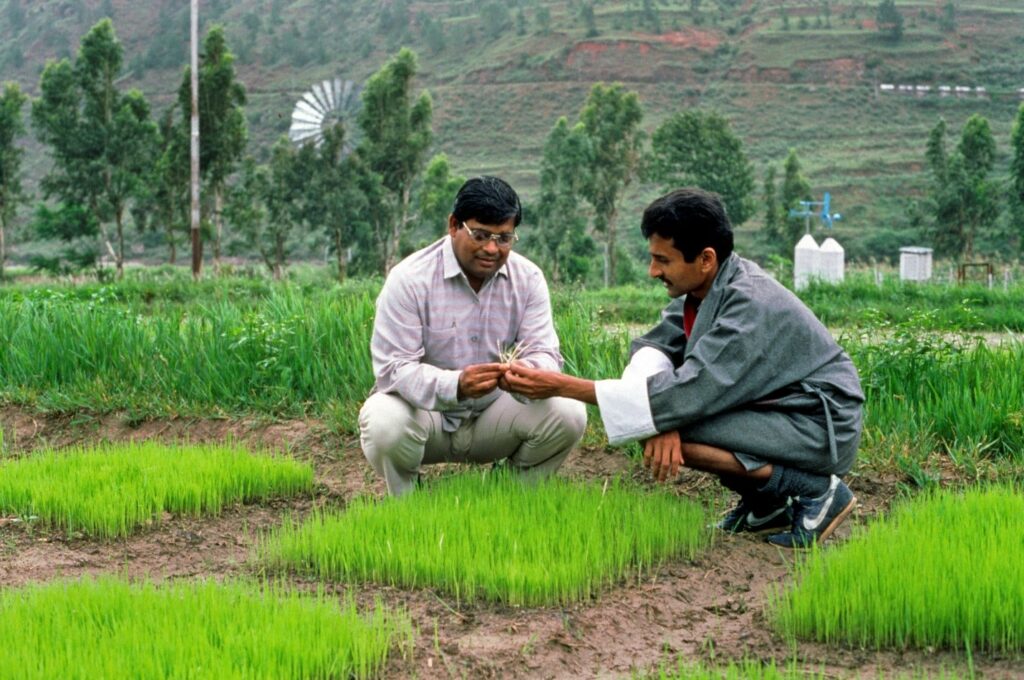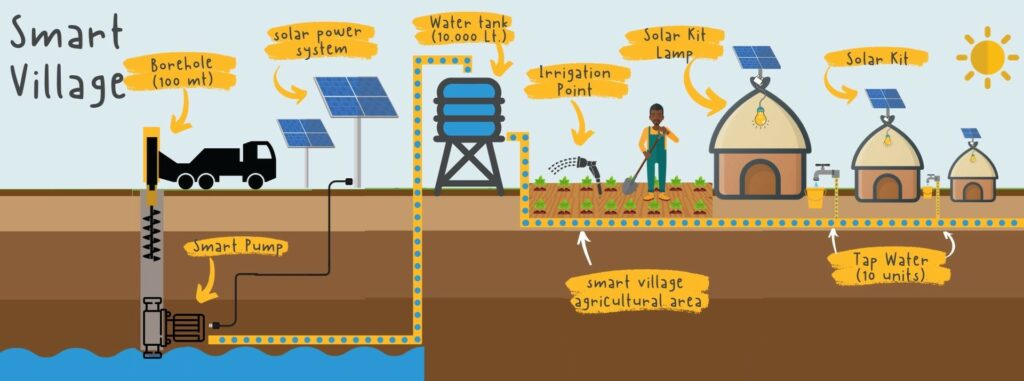
As a core requirement of a master’s program at the National University of Ireland, students are tasked with developing, writing, and presenting a thesis on a topic within the world of climate change and agriculture. This research is done in collaboration with universities, organizations, and institutions that are partnered with CGIAR and CCAFS. Through a series of blog posts, the process of this work will be detailed outlining my project topic, the process of the project, and the results from this work. The topic of my master’s thesis was, the global impact of Climate Smart Villages (CSV).
What is a CSV?
The concept of the Climate Smart Village (CSV) was developed by CGIAR through CCAFS in 2011 (CCAFS, 2021). The creation of CSVs was intended to bring together communities, organizations, the private sector, legislative bodies, and educational institutions to work together to deliver the ability to adapt to and mitigate climate change (CCAFS, 2021). Through a partnership between CCAFS and local organizations, adaptive strategies can be implemented tailored to the needs of the individual community (CCAFS, 2021). This is critical to achieving local level climate resilience because the needs of each community vary greatly (CCAFS, 2021). Agricultural communities around the world vary in size, production systems, and access to resources (Andrieu et al., 2019). Matching adaptation strategies to each unique community, produces the highest chance of achieving food security and climate resilience (Sanogo et al., 2017). For this reason, participatory research is a foundational cornerstone of CSV implementation. The inclusion of local knowledge, ideology, and decision making allows communities to maintain traditional practices in conjuncture with implemented adaptation strategies (Sanogo et al., 2017). Furthermore, the inclusion of external knowledge, technologies, and practices provided from CCAFS allows challenges to be addressed from multiple angles (CCAFS, 2021). The combination of internal and external climate and agricultural resources allows adaptation strategies to be tailored to the needs of each CSV, providing maximum benefits.


Location
Climate Smart Villages are implemented in communities that are identified as being high risk to climactic impacts (CCAFS, 2021). Since 2011, Climate Smart Villages have been implemented in Africa, Asia, and Latin America. In the first three years of implementation, less than 20 Climate Smart Villages were established (CGIAR, 2021). Today this number has significantly expanded to more than 1,000 (CGIAR, 2021). Through policy creation in the area of climate change and agriculture, paired with the work of CCAFS and the CGIAR, the number of CSV’s will continue to grow in the regions they have already been implemented as well as expand to more high-risk countries. Furthermore, farmer-to-farmer scaling promotes the growth of CSV’s to more locations. Farmer-to-farmer scaling happens as farmers within CSV’s act as a resource to provide feedback on which agricultural adaptation strategies are working and could be used by farmers in local agricultural communities.

CSV Strategies for Climate Adaptation
To achieve the goals of increased climate resilience, food security, and adaptive capacity, CSV’s implement a range of adaptation strategies including technologies, farming practices, education, and infrastructure. Specific strategies within these adaptation areas are chosen to be implemented in each CSV based on the unique needs and make-up of the individual community. This promotes success as production systems and climate vary greatly across CSV regions, globally. Examples from the most widely implemented adaptation strategies are detailed below.
Technologies
Solar panels are an example of a technology implemented in CSV’s to help farmers achieve climate resilience. Solar as an efficient renewable energy source increases farmers access to energy allowing other farming technologies to be powered. Furthermore, solar provides a climate mitigation effect as communities are able to decrease their carbon footprint.

Farming Practices
Transition to drought tolerant seed varieties is an example of a farming practice promoting climate resilience in CSV’s. Drought is one of the most widespread projected climactic impacts. Adjusting production systems to be able to produce crops during seasons of droughts is a critical component of increasing farmers resilience to climate change.

Education
Education is agenda 4 of the United Nations sustainable development goals. For this reason, increased access to education is a cornerstone of promoting climate resilience and therefore, an important component of CSV implementation.

Infrastructure
Implementation of water efficient irrigation systems is an example of climate smart infrastructure development in CSV’s. Through the building of irrigation systems, farmers are able to increase production outputs through optimal growing conditions.

Andrieu, N., Howland, F., Acosta-Alba, I., Le Coq, J.-F., Osorio-Garcia, A. M., Martinez-Baron, D., Gamba-Trimiño, C., Loboguerrero, A. M., & Chia, E. (2019). Co-designing Climate-Smart farming systems with Local Stakeholders: A Methodological framework for Achieving large-scale change. Frontiers in Sustainable Food Systems, 3.
Sanogo, D., Ndour, B. Y., Sall, M., Toure, K., Diop, M., Camara, B. A., N’Diaye, O., & Thiam, D. (2017). Participatory diagnosis and development of climate Change adaptive capacity in the groundnut basin of Senegal: Building a climate-smart village model. Agriculture & Food Security, 6(1).
